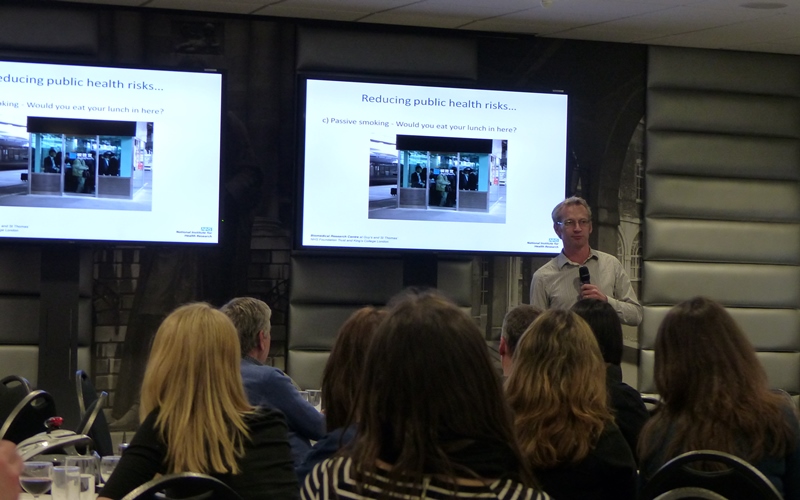London air quality health advice website launched
Dr Ian Mudway calls for focus on today’s air pollution instead of “patting ourselves on the back” for improvement since 1952 smog
A new website aimed at raising awareness of London air pollution exposure has been launched by King’s College London and the NHS National Institute for Health Research.
Unveiled on March 11 at Guy’s Hospital, London, the BreatheLondon.org website’s aim is to provide public health advice and tools to help individuals to reduce the risk of harm from air pollution.
It will also allow community groups to propose their own projects which, if chosen, will be supported with access to personal monitoring equipment and scientific expertise from King’s College London (KCL).
According to KCL, this community-led research will help researchers to “develop better methods of encouraging behavioural change to lower exposure and improve public health”.
The website features information regarding ongoing projects and studies, such as a current project at the Dog Kennel Hill Primary School in East Dulwich, as well as interactive tools and maps helping people to reduce their everyday exposure by enabling them to better choose their routes to school or work.
Speaking at the launch event, BreatheLondon project lead, KCL’s Dr Ben Barratt, presented an overview of some of the community-led research undertaken over the last few years, which has been used to inform the new website.
Dr Barratt said: “This new website, along with our air pollution apps, CityAir and LondonAir, give people access to information on what they are breathing as they move around the city. We hope more people, particularly those with respiratory conditions like asthma, will make use of this new site to help reduce the effects of air pollution on their health.”
1952 London smog
After an introduction by KCL Professor Frank Kelly, the launch event at Guy’s Hospital also featured a presentation on London air quality and its impact on health by fellow KCL air quality expert Dr Ian Mudway.
Dr Mudway began by highlighting the common trend for policy makers to use photographs of the 1952 London smog to highlight the vast improvements in the capital’s air quality in the years since, which he suggested was an “asinine and clearly redundant statement because it is clearly visible that it has improved — it is not a relevant observation.”
He said: “It is the issue now that we have to deal with — not patting ourselves on the back because things are better than they were in 1952.”
Dr Mudway also said that such observations failed to take account of far less visible forms of pollution affecting health today, adding that the issue has “never been solely about deaths — it has always been about air pollution shortening life”.
Furthermore, he pointed out that while the 4,000 deaths figure is often highlighted regarding the week of the smog in December 1952, there were 100,000 more who became ill, which was a “huge drain on resources — it was an economic issue as well”.
Pointing to the increasing number of studies linking air pollution to autism and smaller lung capacity in children, he commented: “That is what the Breathe Clean Air project is about — it is about making air pollution personal and bringing it closer to people’s lives. This is a website that aims to raise awareness about pollution.”
















